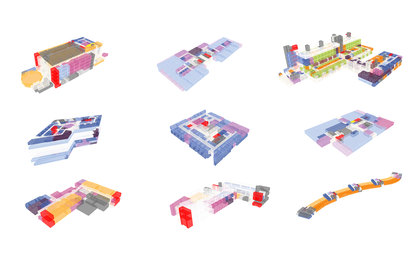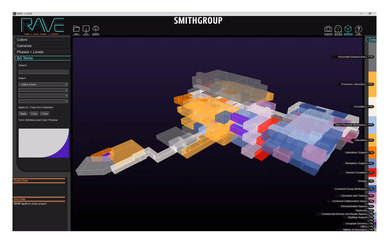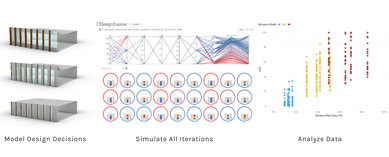The Role of Tech Adaptation in Design Innovation

Technology continues to impact the AEC industry. Years ago, it was Building Information Modeling (BIM) and advances in design documentation; now it’s the growing incorporation of Artificial Intelligence/AI and Machine Learning. Staying in front of these advancing technologies requires more than being an early adopter of new tech as it emerges. AEC IT professionals must look for creative ways to adapt and extend emerging technology to advance design innovation and drive better performance and outcomes.
The needs of our teams and clients are nuanced and often require a more tailormade solution than what an out-of-the-box software can offer. This is especially the case when data is involved; projects generate significant amounts of data, and it can be difficult to track and report on that data across multiple applications and projects.
We saw this issue with the adoption of BIM. Our Technology in Practice (TIP) group responded by developing our own custom application: the Room Area Viewer and Editor (RAVE). RAVE is an application that utilizes a standardized term set and a 3D-visualization interface to gather and analyze building spaces. Being able to visually understand a project’s design program and have access to more data to back up decisions is essential for a well-designed space. RAVE allows us to visualize and collect data from multiple projects and generate useful and meaningful benchmarking for our teams to compare and evaluate. The RAVE visualizer is a valuable design tool used to view the rooms of a designed project and analyze high-level spatial breakdowns.

RAVE’s interface (shown above) provides an intuitive and highly effective way to analyze and evaluate project space use and stacking.
The data from RAVE allows us to make informed decisions about client programming needs. We developed a customized term set to suit our needs and the needs of our client so that we get consistent and actionable data. We are then able to leverage the information from across our portfolio of work to tailor designs to be efficient and meet the needs of specific users and facility types, while also allowing our clients to learn from our experience and see space-use trends in the market.
The development of tools like RAVE allows us to leverage the information that is already a part of a project's lifecycle, but also extend that information to be useful for future clients and future projects. Creating a dataset that can be used for a variety of new tools and technology makes BIM more powerful. Moving forward, the data gathered with RAVE can be used with AI and Machine Learning to search for and analyze trends and optimize building layouts. We will enhance our ability to understand the energy impact of our buildings by running scenarios based on more detailed programmatic and spatial information; this will allow us to learn even more from our portfolio, providing clients recommendations based on the best information we can offer.

Coupling AI with energy modeling to generate and evaluate thousands of alternatives will revolutionize generative design. SmithGroup’s recent collaboration with Oak Ridge National Laboratory generated over 200,000 building iterations and 250,000 energy models in less than an hour – a task that would have taken one full-time employee 365 years to complete.
Innovation requires more than adopting cutting-edge technology. Technology is in need of design solutions for implementation in the same way that buildings and public spaces are. We need to look for unrealized opportunities to use technological advancements to generate new tools and workflows that can enhance decision making and drive better design. We need to consider not only how we can impact individual projects, but how a culture of applied innovation can benefit the market and the industry.